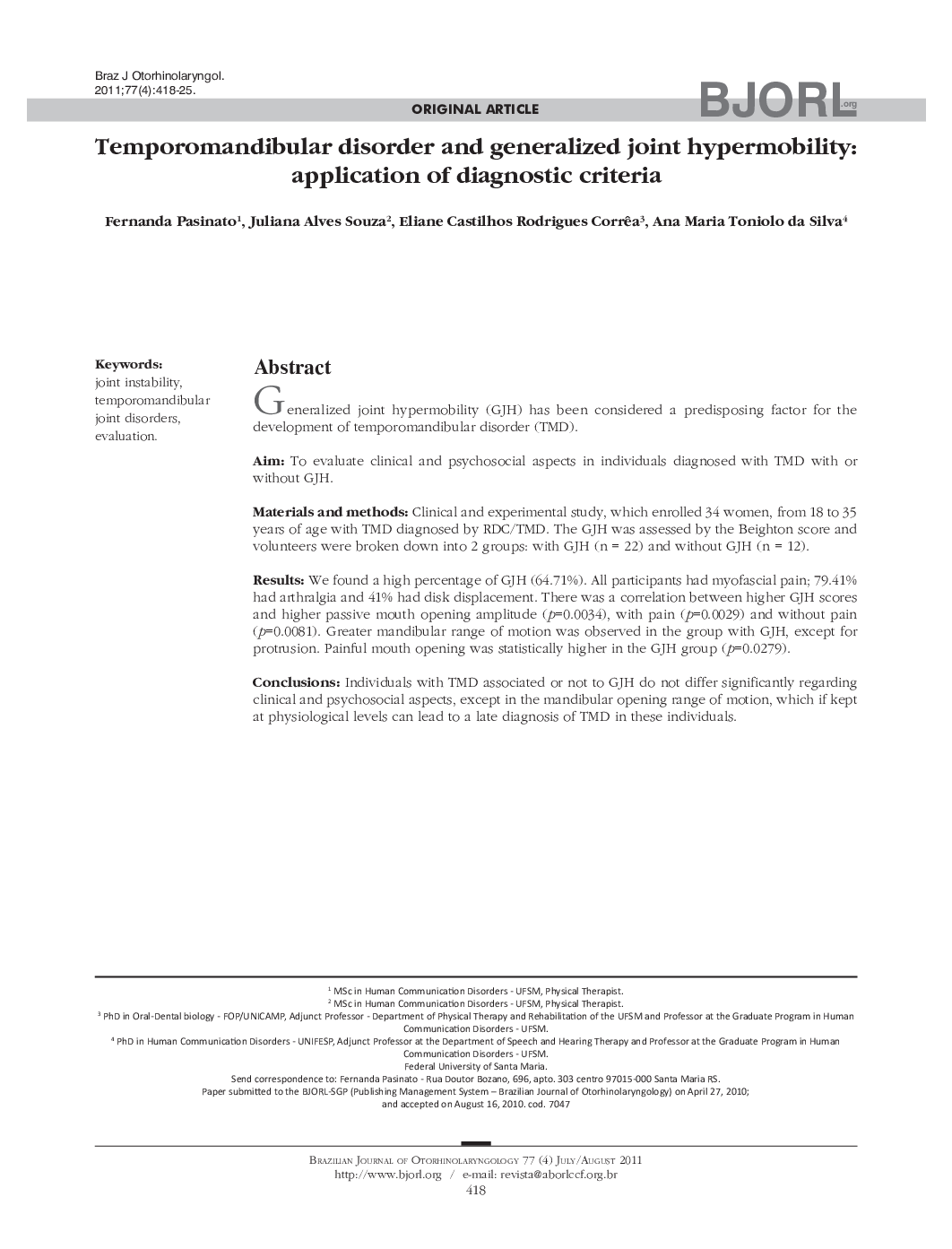| کد مقاله | کد نشریه | سال انتشار | مقاله انگلیسی | نسخه تمام متن |
|---|---|---|---|---|
| 4107370 | 1605391 | 2011 | 8 صفحه PDF | دانلود رایگان |

Generalized joint hypermobility (GJH) has been considered a predisposing factor for the development of temporomandibular disorder (TMD).AimTo evaluate clinical and psychosocial aspects in individuals diagnosed with TMD with or without GJH.Materials and methodsClinical and experimental study, which enrolled 34 women, from 18 to 35 years of age with TMD diagnosed by RDC/TMD. The GJH was assessed by the Beighton score and volunteers were broken down into 2 groups: with GJH (n = 22) and without GJH (n = 12).ResultsWe found a high percentage of GJH (64.71%). All participants had myofascial pain; 79.41% had arthralgia and 41% had disk displacement. There was a correlation between higher GJH scores and higher passive mouth opening amplitude (p=0.0034), with pain (p=0.0029) and without pain (p=0.0081). Greater mandibular range of motion was observed in the group with GJH, except for protrusion. Painful mouth opening was statistically higher in the GJH group (p=0.0279).ConclusionsIndividuals with TMD associated or not to GJH do not differ significantly regarding clinical and psychosocial aspects, except in the mandibular opening range of motion, which if kept at physiological levels can lead to a late diagnosis of TMD in these individuals.
Journal: Brazilian Journal of Otorhinolaryngology - Volume 77, Issue 4, July–August 2011, Pages 418–425